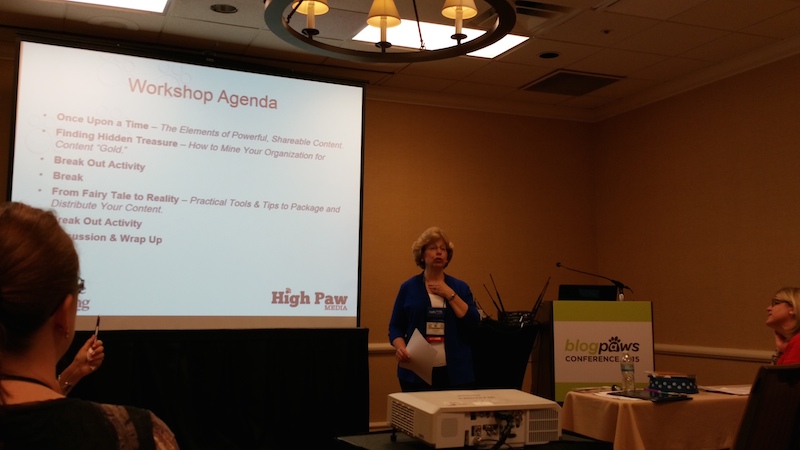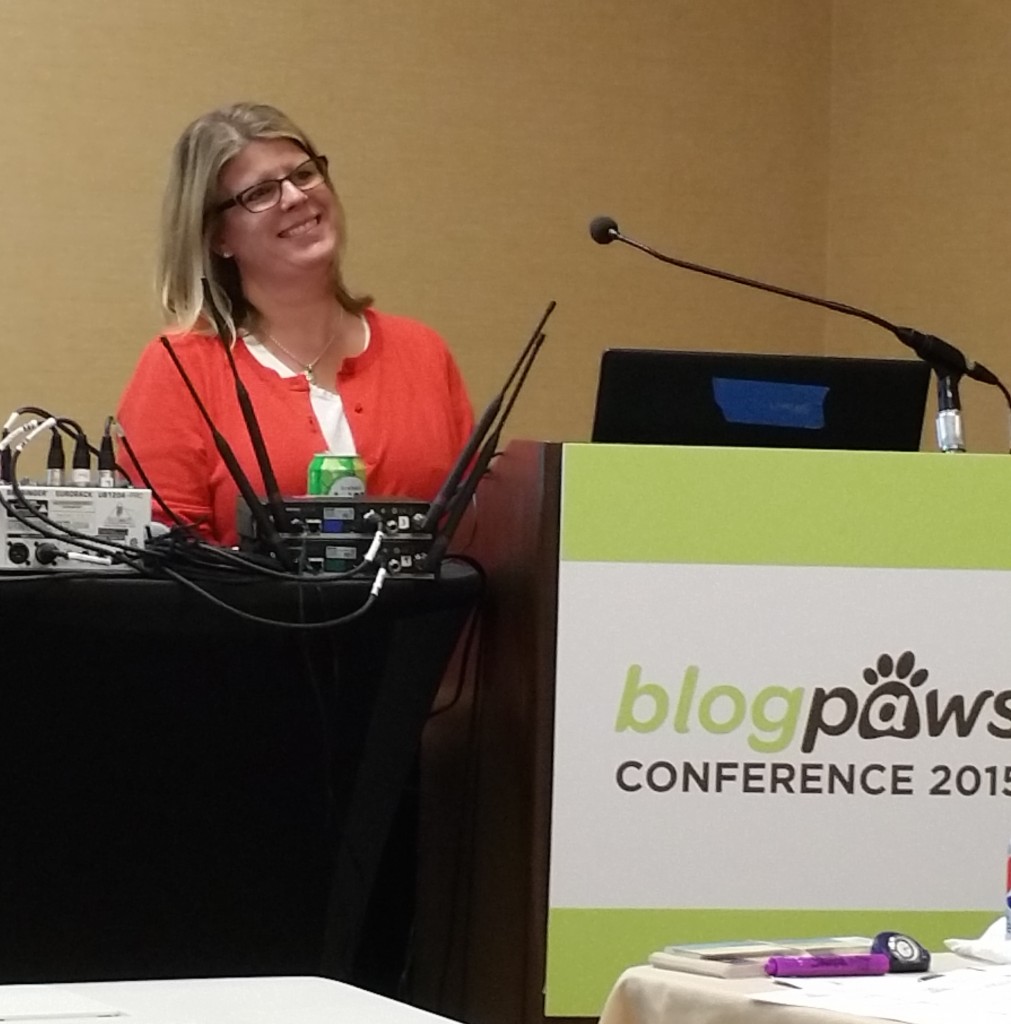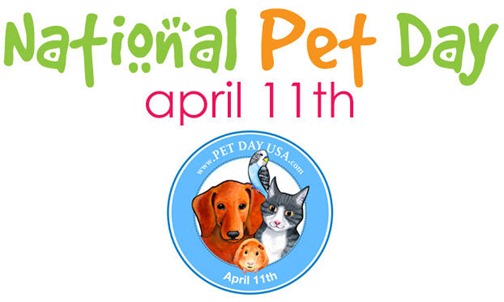#BlogPaws: Find And Tell Your Shelter/Rescue Story
Post by Robbi Hess, BlogPaws Blog Manager

In case you missed the session at the #BlogPaws Conference on “How To Find and Tell Your Story For Social Media Success for Shelters & Rescues” this post was written on-site — how’s that for on-the-spot reporting!? The session was sponsored by the Pedigree Foundation and was introduced by Julie Duke, Executive Director of the Foundation.
What is a shelter or rescue’s number one want? To find homes for the pets in their care. How can they do that? According to Sybil Stershic and Caroline Golon, through the power of social media. “It all starts with ‘once upon a time,'” Sybil said. “You need to find the hidden treasures for your content for your shelter.”
Caroline shared that through her cat humor blog efforts she has raised $85,000. “You can find stories to share through your content that can help make a difference in your part of the animal  rescue world,” she said. “The better the content, the more people will share and the more pets will find forever homes.” And that’s the bottom line, right?
rescue world,” she said. “The better the content, the more people will share and the more pets will find forever homes.” And that’s the bottom line, right?
How can you do that? By not creating your content on the fly. By having an editorial calendar for your content. You should plan:
- What you’ll share
- How you’ll share
- Where you’ll share
- When you’ll share
“Planning can eliminate stress and help exercise your content-creating muscles,” Caroline said. What will good content do for your shelter or rescue?
- It will make it stand out
- It will make your content shareable
- It builds credibility
What is good content? It is content that is not about you — the organization — it is about the pet you’re looking to help. Powerful content, she said:
- Inspires
- Educates
- Solves a problem
How can you create content that works? Here are some ways:
- Create “amazing animal” stories
- Write about unusual characteristics of a pet
- Write about unusual pet friendships
- Use cute photos
- Write a tip list
- Write a DIY post
- Use humor
Find content that is uplifting. For example, don’t write a post that reads, “Buddy needs a home NOW!” instead, write “Look at how high Buddy will jump to catch that frisbee. Don’t you want a companion to play frisbee with?” Put the subject — the adoptable pet — in a positive light. Highlight his or her uniqueness. Focus on the positive, rather than the negative. In the example above, the first sentence may have had an urgency — a call to action — “adopt Buddy NOW!” but it is also, perhaps subconsciously reading, “… or else.” The second sentence highlights Buddy in a positive light and shows him to be a fun, active companion.
Shelters and rescues also need to be ready in the event their content goes viral. They need to have a plan in place when the media starts calling for interviews or when news outlets want to use the content. You just never know when something you write or post will go viral and while it’s a happy “problem” to have, it’s best to have a plan in place.
The session wrapped up with a list of where to distribute your content once you’ve written it. Sybil and Caroline also noted that it is best to start your content on your own blog or website and build it out from there, “it’s better to have your content on a platform you own,” they said.
Once the post is written you should share it on:
- News sites or send as a press release
- Google+ — remember this site is Google property and that means your content becomes searchable. If you’re not using G+, you should be Caroline said.
- Your e-newsletter. You should have a newsletter sign up on your website to capture the names of individuals who come to your site and market to them in your own newsletter
This information was aimed toward individuals involved in pet rescues and shelter operators, but everything Sybil and Caroline shared can be used by any pet blogger who is looking to build a following, his or her own credibility and make a difference in the life of pets.
What advice do you have for individuals looking to either work with shelters or rescues and support their mission to get pets into forever homes?



